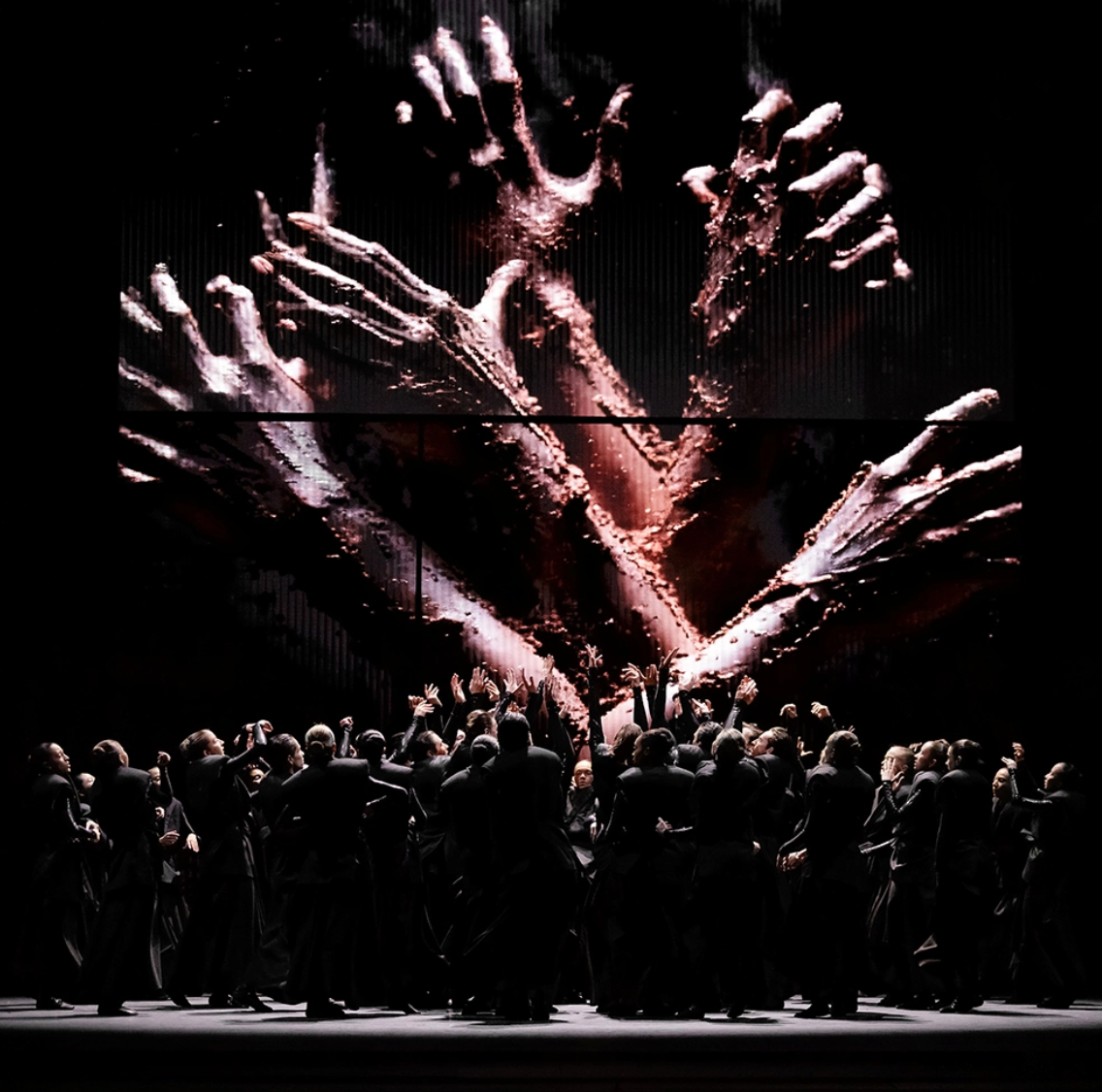Text by Irem Erkin
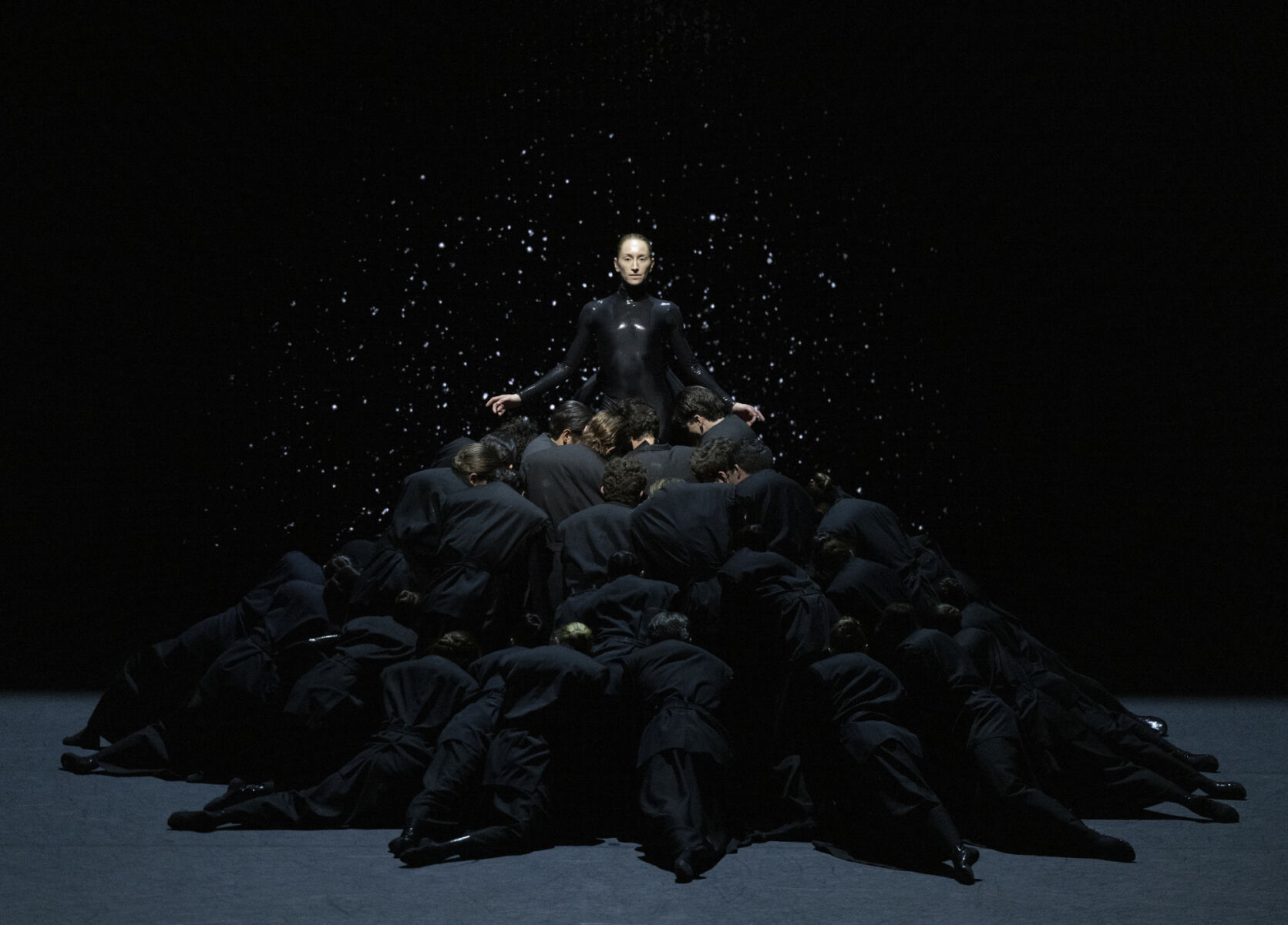
Mere Mortals is a captivating sensory ballet blending music and dance in breathtaking visuals. The innovative production, launched by Tamara Rojo, the Artistic Director of the San Francisco Ballet, features music by Floating Points, choreography by Aszure Barton, and scenography by Hamill Industries. It offers a contemporary reimagining of the timeless tale of Pandora within the context of our technology-driven era.
Hamill Industries designed a dynamic LED scenography that shapes light into various spaces. Their portrayal of Pandora focused on her human complexities, embodying the mix of good and evil in us all and symbolising the responsibility that comes with power, akin to AI. In their exploration, they merged traditional artistic techniques with cutting-edge AI tools, leading to reevaluating artistic methodologies in our modern technological landscape while maintaining their ability as creators to craft the images.
Pandora, the mythological figure, represents the archetype of the first mortal woman created by the gods. Gifted a jar by Zeus with a stern warning not to open it, her curiosity leads her to unleash all the world’s evils and miseries, leaving only hope within. Mere Mortals ballet inevitably parallels the philosophical questions about artificial intelligence (AI) and how humankind is forging new paths in this unknown territory despite the risk.
From the beginning, Rojo wanted a ballet that mirrored the current state of the world, especially relevant in a tech-centric area like San Francisco. Her vision was to revisit a classic theme in a modern way that is rarely seen in other ballet or dance institutions. Hamill Industries‘ task was to connect the world of artificial intelligence with immersive visual staging. Their visuals were designed to relate closely to the musical structure and rhythms, ensuring a fluid connection on stage. Integrating the ballet aspect, creative producer LeeAnn Rossi worked with Floating Points and Rojo to define a series of scenes and establish the storyline, as well as how to approach the character of Pandora and how to structure the story’s key points.
Rojo fostered a residency that allowed the team to build the story collaboratively. During this residency, they explored how the story could start with Prometheus, focusing on fire as a super-organic material and a metaphor for technology. They aimed to evolve the story from a classic, analog, and organic visual style to a more technological narrative, using these technologies to convey their ideas visually.
Aszure Barton introduced the concept of the systems of the gods and the pre-Pandora human systems. She emphasised that Pandora was not just a tool of destruction created by the gods but an extremely feminine element with her agenda and feelings. Pandora’s character revealed human contradictions and responsibilities, paralleling the idea of artificial intelligence giving us consciousness, similar to fire. For example, Floating Points used custom instruments like the Therevox to translate these concepts acoustically to create Pandora’s voice. They visualised this scene without breaking the magic or fragility, especially during moments of Pandora’s desolation, portraying her as a being that causes destruction but is also an integral part of us.
The dialogue between the systems—human and AI—was central to their approach. Aszure Barton structured the language codes, and Hamill Industries worked on interpreting the visual elements. Integrating artificial intelligence into their creative process is a significant consideration for Hamill Industries. They view AI as a powerful but rapidly evolving tool that requires careful management.
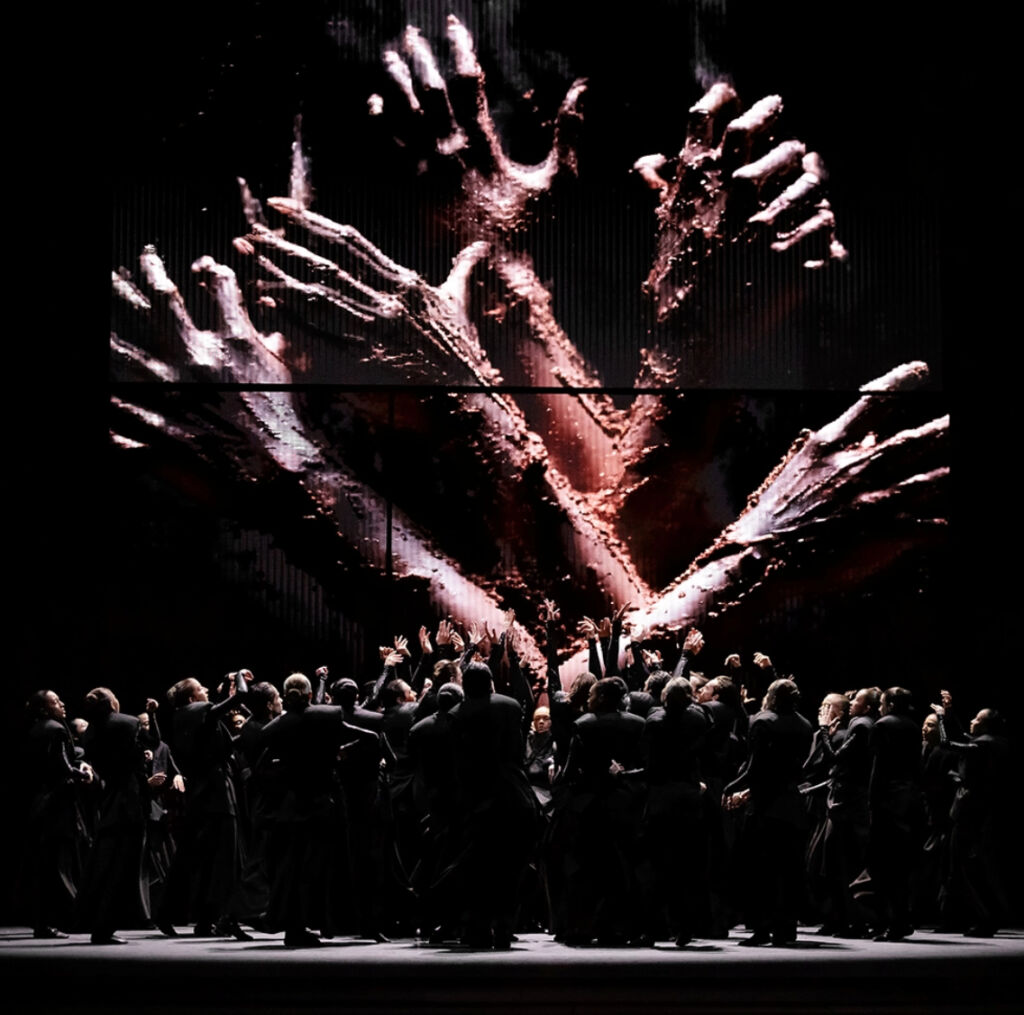
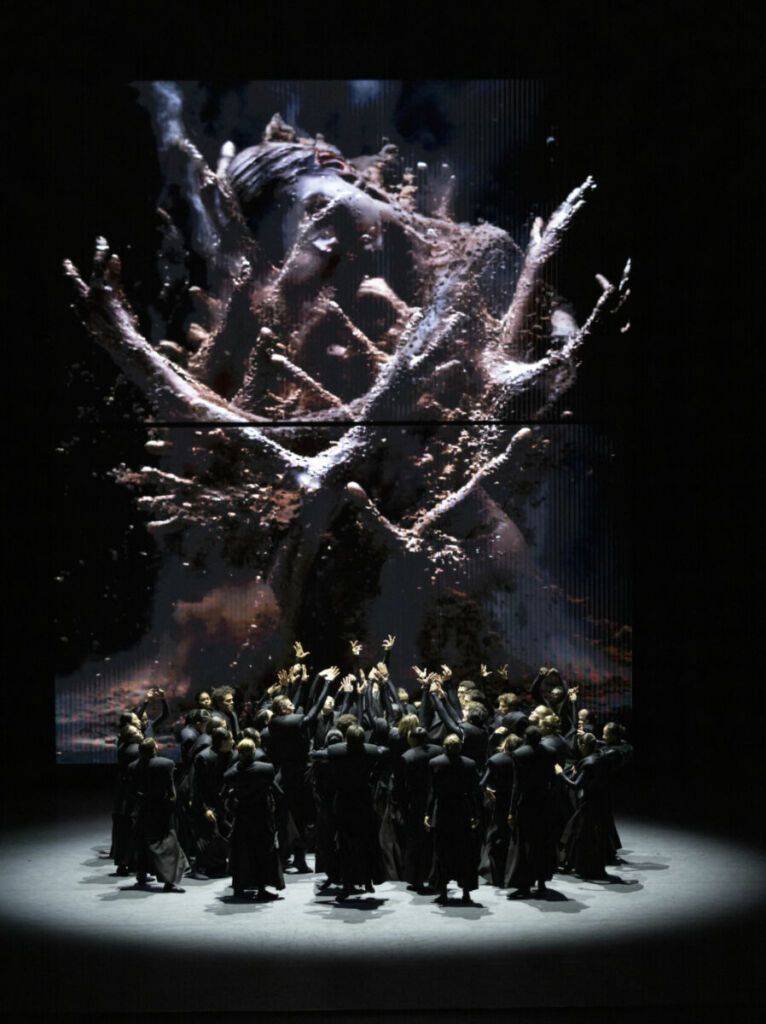
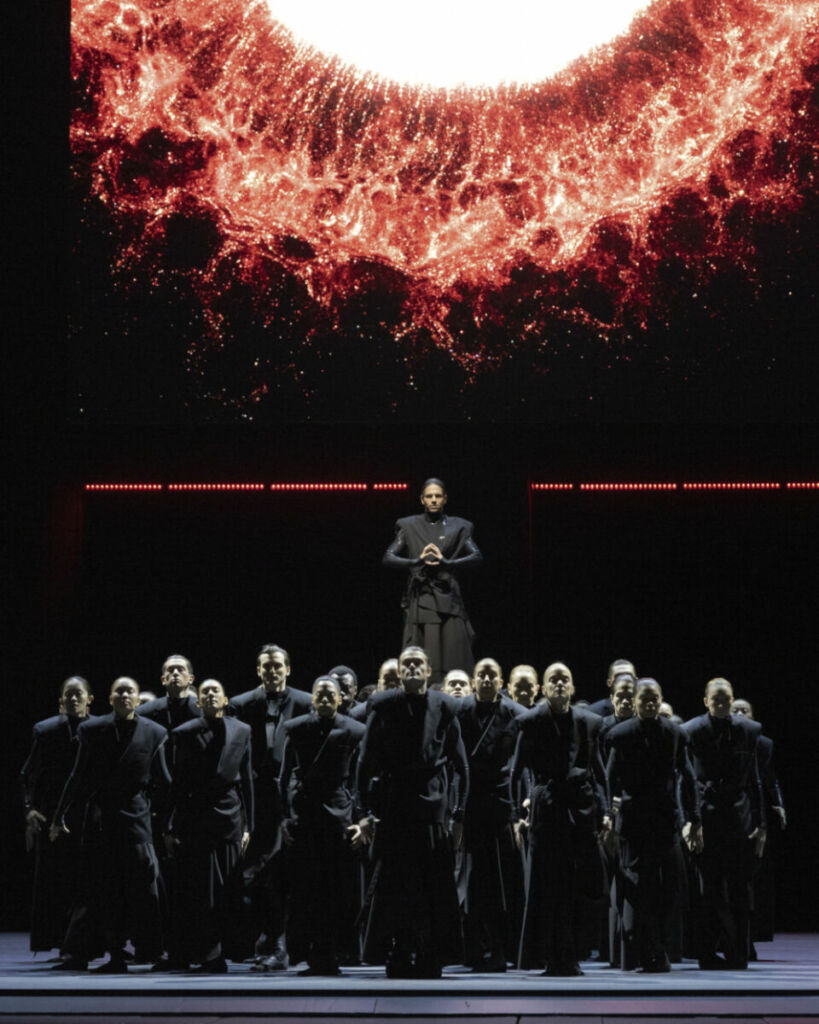
Their approach involves a creative strategy discussed extensively with their team, ensuring AI complements rather than dominates the visual elements of the ballet. They employ their own datasets and tools like Stable Diffusion and Confido AI to facilitate their workflow, establishing a code of conduct and rules to guide their usage. Central to this approach is respecting the creative contributions of human artists and relieving potential industry impacts, such as job displacement.
Hamill Industries told us that they maintain strict guidelines, always using their proprietary datasets to avoid issues with copyright or unfair use of external models. For instance, they conducted a photo session with San Francisco Ballet dancers, securing consent for the dataset used. This approach ensures ethical and legal considerations are met, respecting both individual rights and the integrity of their artistic output. They train their AI models responsibly, involving the ballet in reviewing and understanding the results. Their commitment lies in demonstrating responsibility and ethical practice, particularly when the implications extend beyond technological innovation to cultural expression and societal impact.
Working with artificial intelligence presents Hamill Industries with profound opportunities and challenges. Their journey into this realm began with collaborative projects with Sónar and Kianí del Valle, sparking an exploration of neural networks and AI algorithms’ capabilities. The challenge lay in understanding the intricate workings of these algorithms—whether execution-based or other types—which required deep engagement and collaboration with institutions like the Universitat Politècnica de Catalunya · BarcelonaTech (UPC). This collaboration enhanced their technical understanding and broadened their perspective on the potential applications within visual arts.
A significant challenge they faced was the inherent tendency of AI tools towards standardisation and normalisation of aesthetics. Hamill Industries emphasises the importance of maintaining a distinct artistic voice despite these current trends, viewing it as a continual challenge to cultivate a unique aesthetic identity while harnessing AI’s capabilities. Despite these challenges, Hamill Industries finds that integrating AI has proven to be a profoundly enriching experience. It has provided opportunities to explore unconventional, creative paths and discover new artistic possibilities. They find particular excitement when AI algorithms produce unexpected results or errors, seeing these instances as prolific grounds for innovation and creative breakthroughs.
The recent introduction of advanced AI algorithms like Sora has further amplified their enthusiasm and raised critical questions about the future of post-production and film workflows. These developments inspire creativity and require carefully examining the evolving roles within the creative industries. They say the future trajectory of artificial intelligence aesthetics poses profound questions and challenges, reflecting a landscape with complexities and uncertainties. As AI integration expands within creative domains, including art and technology, fundamental debates emerge regarding its impact on artistic identity and cultural discourse. At the forefront of these discussions lies the tension between AI-driven standardisation and preserving unique creative voices.
Hamill Industries highlights the importance of maintaining creative distinctiveness among the trend towards uniformity in AI-generated aesthetics. Moreover, the evolving role of artists in this context raises pivotal questions: Are artists becoming primarily technological experts or preserving their essence as creators? This question focuses on broader societal concerns about labour dynamics and the future of craftsmanship in an increasingly automated world. Issues such as labour rights, algorithmic governance, and the ethical boundaries of AI-generated content spark debate. Artists, studios, regulators, and tech developers all play a role in guiding this path. As AI transforms how creativity and aesthetics are understood, managing these challenges is key to shaping a future that balances innovation with ethics.

